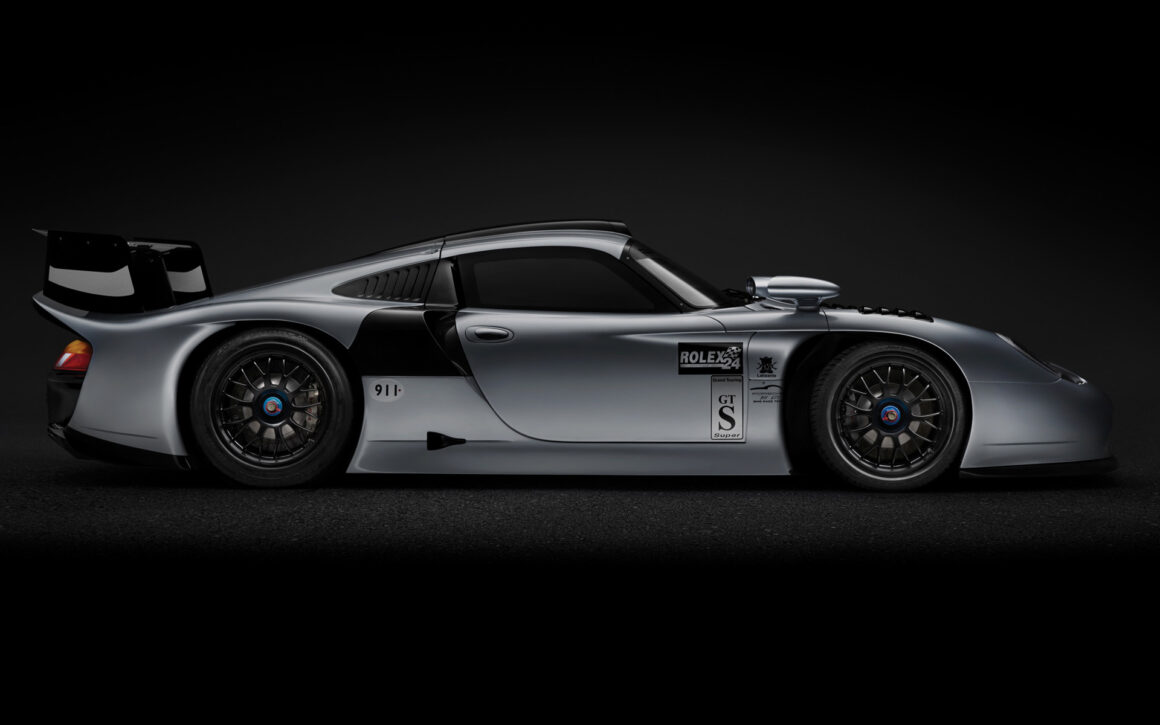In the mid-90s, the cars of the Gran Turismo series began to return to the number of contenders for victory in the “24 Hours of Le Mans”. In 1994, Porsche took advantage of the free technical requirements and won in the “24 Hours of Le Mans” on the car Dauer 962 Le Mans Porsche. Although the Dauer 962 was inferior in speed to its main competitors, the Toyota and Courage prototypes. The Le Mans organizers were not satisfied and made it clear that they no longer want to see this car on the start line. This is how the story of Porsche 911 GT1 has started.


After this incident, Zuffenhausen began to look for options for returning to Le Mans. The first option was to put a Porsche engine in the WSC95 prototype, which was done. The prototype was based on the Jaguar XJR-14 car. But unfortunately, the victory in 1995 has taken the McLaren F1 GTR. After that, the management of Porsche decided to build a completely own car for this class. Also, for marketing reasons, the engineers were faced with the task of creating a car as similar as possible to the Porsche 911 GT1.
The first attempt
Initially, the similarity was about 80%, but the final version received only the front subframe, the interior partition, and the front panel. This allowed Porsche to pass the certification without crash tests. The engine was built on the basis of 962 engines: 6-cylinder horizontal-opposed with four valves per cylinder, two turbochargers, and two intercoolers. It is a completely water-cooled; electronic engine management system-TAG 3.8, sequential distributed fuel injection with lambda regulation. The maximum engine power is about 600 hp. At 7200 rpm with a maximum torque of 650 Nm. The weight of the racing version was 1050 kg, the road version – 1250 kg.


The road version was not ready until January 1996. Six months after the creation of the sketches, two racing cars were released. And then came the moment when, in June 1996, the new Porsche 911 GT1 debuted at the “24 Hours of Le Mans”. And immediately, the novelty began to confidently outperform its rival McLaren F1. Although the new 911 was slightly inferior in speed, it won due to the larger stroke due to the increased gas tank. Porsche won this race, but it was a different car – the TWR-Porsche WSC95. In 1997, a new modified 911 entered the 24 Hours of Le Mans and led for most of the race, but then Bob Wollek was involved in an accident on lap 238, after which the second crew car caught fire, and the victory again went to the TWR-Porsche WSC95.
The undisputed winner
In 1998, a new model appeared, designed to get an absolute victory at Le Mans and give a worthy rebuff to the CLK-GTR in the FIA GT Championship. GT1/98 was very different from its predecessors and had nothing to do with the classic 911. The basis of the new car was a carbon fiber monocoque made. The wheelbase was increased, and the weight was reduced by 90 kg. The engine received minor improvements and remained with the same power of 600 hp. This year, Porsche had serious rivals, but as usual in daily marathons, reliability decided everything. The leading GTR-LM came off due to hydraulic failures on the 19th and 31st laps. Toyota simply burned out the engine, their second car failed not long before the finish. But neither numerous “Nissan” nor “McLaren” could not prevent Porsche from taking the victory.


In just three years, 41 GT1 family cars were produced: 18 race cars and 23 road cars. The first two versions of the racing 911 GT1 were delivered to customer teams, with some of the first-generation cars being converted to the GT1 Evo. The 911 GT1 / 98 was only used by the factory team. Most of the road cars were released with a design in the style of 996. For each of them, buyers laid out 800 000 euros approx. The homologation version of the GT1 / 98 with a carbon monocoque was produced in a single copy.
Read more SUPERCAR articles HERE